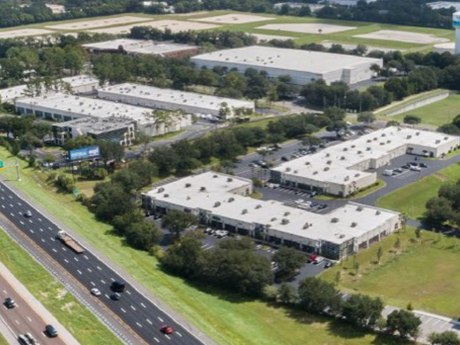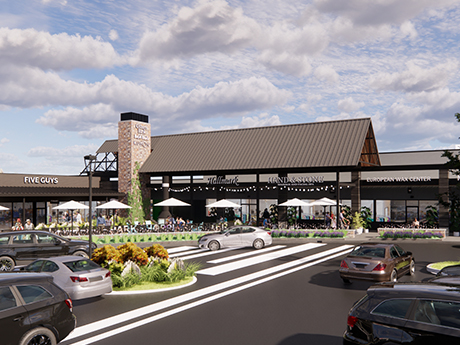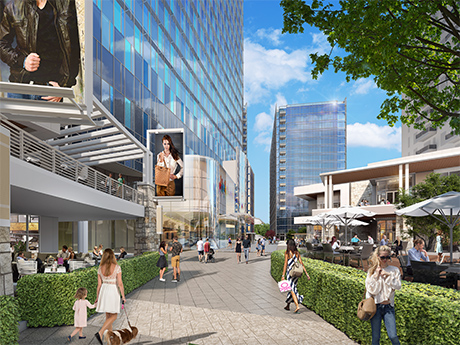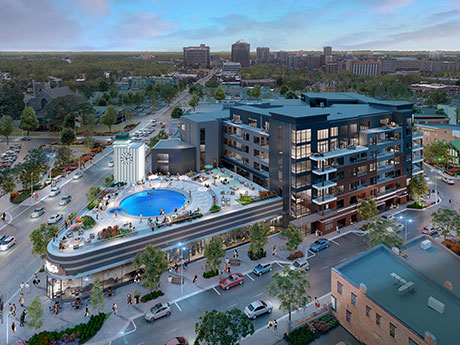By Chase Clancy, vice president, Colliers The Austin industrial market is booming. According to Colliers’ research, Austin’s industrial market continues to grow at an amazing clip, spurred by rapid population growth, major manufacturing relocations and new e-commerce and inventory trends. Despite the longstanding shadows that larger markets like Houston and Dallas have cast on Austin’s growth, the market is reaching a fever pitch of rising rents, tightening vacancy, significant new deliveries and equally noteworthy preleasing activity. Based on Austin’s population size, Colliers’ research suggests that the market has the runway — both in terms of supply and demand — to nearly double in size over the next five years. With demand for space showing no sign of cooling at the local level, we project a prolonged period of record development and record absorption. To put that into context, Austin’s industrial market currently spans roughly 57 million square feet. We are tracking more than 40 million square feet of product in our development pipeline — more than 10.2 million square feet of which is currently under construction — with more on the horizon. Trailing 12-month absorption stands at approximately 3.4 million square feet as of the second quarter of 2022, but …
Market Reports
Still going strong after two years since the onslaught of COVID-19, Orlando’s industrial market has seen a steady increase of robust leasing activity and development, with no signs of stopping. The growth is attributable to record-low vacancy, emerging construction and increasing demand from existing tenants expanding their businesses and new tenants in the market. Economic conditions affecting the market are similar to last year, as labor shortages and supply chain issues remain. However, the industrial sector overall has not been adversely affected. Orlando continues to be the place for existing business advancement and new business development. The city’s population growth outpaces that of any other city in Florida due to its central location, warm weather year-round, no state tax and relative affordability. As such, the market is seeing large enterprise retail and consumer goods companies claiming their stake in the Sunshine State. Robust leasing activity The total industrial leasing volume in the Orlando market for the second-quarter 2022 was 4.5 million square feet, 43 percent of the total leasing volume seen in 2021. Eight leases over 100,000 square feet were signed to date in 2022. The largest lease in the first half of 2022 was the new 294,787-square-foot Coca-Cola lease …
By Kari Glinski, vice president of asset management, Federal Realty Investment Trust Philadelphia is known for many things, from being the City of Brotherly Love to a city rich in history, art, culture and food. As a result, the region is desirable for many residents and visitors and has been recognized in real estate circles for its housing and retail development opportunities. Throughout the pandemic, greater Philadelphia has lent itself to commuters, residents, tourists and hybrid employers by providing convenient access to other East Coast cities, vast amenities and outdoor recreation spaces, as well as unique dining, entertainment and shopping experiences. Recognizing the need to continue catering to the remote employees, shopping center owners and developers see ample opportunity across the region, specifically within the inner suburbs. In these locations, there is a great mix of diversity, mature employment bases and irreplaceable real estate where developers can continually create long-term value through blended opportunities. Federal Realty has been reinvesting in the greater Philadelphia and Southern New Jersey region for the past decade, strategically transforming our portfolio. Our company focuses on the ownership, operation and redevelopment of high-quality, retail-focused properties, with a mission to deliver long-term, sustainable growth through investing in …
By Kimberly A. Rollins, Senior Vice President, Rollins & Randall Multi-Family Group, Commercial Properties Inc. The big question on everyone’s mind is where Phoenix’s multifamily market is going. After several years of pandemic-caused uncertainty, the implications are still transforming the market. Whether it is workforce mobility, supply chain issues, or labor shortages, uncertainty and inflation have affected all areas of real estate — no place more so than here in the Phoenix Metro Area. The perfect storm of historically low interest rates, job opportunities, limited new development and a low cost of living have given rise to the housing shortage that has played out in the Valley over the past several years. We saw multifamily effective rent increase 22.7 percent year over year in the third quarter of 2021, and an average market sale price per unit of $297,697, with a 3.9 percent year-to-date cap rate, according to CoStar. Over the past 10 years, vacancy rates have dropped every year. They fell from 8.3 percent in 2012 to a low of 5.8 percent in 2021. Conversely, year to date we are seeing a vacancy increase for the first time during that timeframe, to 7.7 percent. Last year also saw the highest level of …
By Mary Lamie, Bi-State Development Modern bulk distribution buildings under construction in the St. Louis region hit a historic high earlier this year, approaching 8 million square feet. The record level of construction illustrates the industrial real estate market in the southwestern Illinois and eastern Missouri region continues to expand to meet ever-increasing demand as world and domestic markets strive to move beyond the disruption that has defined the past two years. The need for reliable freight logistics and flexible supply chains is proving more essential than ever to keep economies moving, and regions that can meet those needs while delivering the modern bulk and manufacturing space distributors and developers demand will have the greatest potential for continued growth. In mid-2022, nearly 7.4 million square feet remained under construction in the St. Louis region, a level of construction 78 percent higher than 2021 and 47 percent higher than the most recent five-year average. Also noteworthy is the fact that 100 percent of the modern bulk construction projects underway is speculative. That represents more speculative activity in the region today than in 2019, 2020 and 2021 combined, a clear indication that developers believe the St. Louis market is a solid place …
By Rob Welker, president and partner, Hoefer Welker; and Steven Janeway, principal and commercial practice leader, Hoefer Welker As one of the biggest states, Texas regularly sees some of the largest demand in real estate development in the country. In recent years, North Texas specifically has experienced a rapid short-term increase in population, leading to a significant development boom and driving up urban and workforce construction volume, rental rates and sale values. Mixed-use developments have led the charge in commercial growth throughout the Dallas-Fort Worth (DFW) metroplex. Higher overall interest in a live-work-play lifestyle has contributed to the development of a larger number of spaces that provide corporate, retail and residential capabilities. Gone are the days when corporate campuses and multifamily complexes were predominantly in the suburbs; tenants and employers have increasingly searched for living experiences in urban environments where they can combine the three biggest facets of their lives within a single destination. This provides the convenience that tenants crave and the access to concentrated populations that retailers and office users need to be successful. The Coastal Exodus As personal and business income tax rates, regulatory hurdles and costs of living abound in coastal markets, corporations have begun relocating …
The high quality of life and relatively low cost of living in Richmond, coupled with sustained investment in live-work-play infrastructure, has led to population growth and a surge in investor interest in the city. The job market is showing strong signs of recovery with an unemployment rate of 3.2 percent, which is 40 basis points below the national average. Although office-using employment remains elevated at 3 percent from pre-pandemic levels, office vacancy rates remain relatively stable at 11.2 percent. Live-work-play rules the day Richmond has become a hot spot for millennials, boasting a low cost of living, high quality of life and amenity-rich neighborhoods. While the broader Richmond market has recorded 10 percent population growth since 2010, key submarkets in the urban core are growing at a faster pace, with Scott’s Addition recording 23 percent population growth during the same period. Developers have capitalized on this increased demand for city living, building out the urban core with multifamily and mixed-use developments in trendy submarkets. Scott’s Addition and Manchester — which have more breweries per capita than any other neighborhood — have added a combined 3,000 apartment units in the last five years, with an additional 1,300 units currently under construction. …
By Bill Honsaker, Managing Director, JLL Metro Phoenix recorded more than 7 million square feet of industrial absorption during the second quarter of 2022, setting a quarterly record for the market. The average size of local industrial deals has also ballooned, increasing 25 percent year over year to a new high of 91,095 square feet. The Southwest submarket remains the Valley’s industrial powerhouse, accounting for 68 percent of total leasing volume this past quarter. But as demand for big space continues to swell, so does the pressure on inventory. That leaves the market divided into two groups: those already in the market with land or buildings in their possession, and those who missed the land rush and must now buy out someone else’s position. In fact, across the Valley’s industrial core (roughly bounded by the Loop 303 to the west, Phoenix Gateway Airport to the east, Deer Valley to the north and the lower 202 to the south), would-be investors, developers and tenants are beginning to ask, “Where do we go next?” This dynamic has become a boon for further-out markets to Phoenix’s east and west, as well as to the south — particularly Central Arizona. With projects like Inland Port Arizona, Pinal …
By Chris Armer, Hoefer Welker People who call the Kansas City metropolitan area home know it’s a desirable place to live. From the robust job market and vibrant arts scene to its rich history and, of course, stellar sports teams, the Kansas City metro area attracts a diverse group of people. Kansas City is evolving and so are its housing needs. In recent years, the demand for multifamily development in Kansas City has grown, driven by a range of factors. Mass retirements and flexible work arrangements are shifting priorities, while the housing shortage and rising interest rates are sending prospective homeowners on the search for attractive alternatives. The multifamily housing trend stands to gain momentum, creating a space for discerning real estate and architecture firms with development expertise to pave the way in an evolving housing market. The great shuffle Much has been said about the Great Resignation, but the COVID-19 pandemic didn’t only affect young and midlife workers who left their jobs to pursue higher-paying and more meaningful employment. It also hastened the Great Retirement, a massive wave of baby boomers leaving the workforce, many of them earlier than planned. Now those homeowners are selling their suburban single-family …
By Jim Breitenfeld, CCIM, president, Sidecar Commercial Real Estate While Collin County continues to see massive residential projects in markets like Anna, Celina and Melissa, as well as major redevelopments of existing shopping and dining destinations, a closer look at the region’s economic drivers reveals a significant shift in the types of industries that are driving demand for new commercial projects. Housing remains a critical need for all of North Texas, one of the fastest-growing regions in the country. With that comes demand for revamped retail, restaurant and entertainment options that include a healthy mix of necessity and luxury users, as well as some basic demand for office space. The latter is already well-supported via the swaths of corporate relocations and regional workforce consolidations that have occurred in the area over the past five to 10 years. But those needs are fairly germane to any area that is experiencing rapid and substantial job and population growth. In addition to this activity, we now see new types of commercial tenants targeting Collin County. These include life sciences/biotech, supply chain/logistics and specialized healthcare uses. According to data supplied by the U.S. Bureau of Labor Statistics and analyzed and published in the Sidecar …









